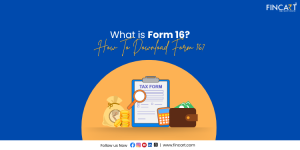Planning to sell a property but worried about the capital gains tax it would attract? You’re not alone. Many property owners tend to feel this way and wonder if there are ways to maximise profits. One of the most well-known ways to minimise capital gains tax on property is by reinvesting in another property. While this may be an option for some people, it may not work for everyone else.
In this article, we’ll explore all the different ways to reduce your tax burden for this new financial year. Let’s start with understanding what capital gains tax means.
What are Capital Gains on Property?
Capital gains tax on property is the tax charged on the profit made from selling a property. Whenever we sell a property for a price higher than what we originally paid to acquire it, the difference between the selling price and the purchase price is considered capital gains on property and is taxable.
Depending on how long the property was owned before being sold, there are two types of capital gains – Short-term (STCG) and long-term (LTCG) capital gains.
1. Short-term Capital Gains (STCG)
If a property is sold within two years of buying it, the profit is considered a short-term capital gain and is taxed according to the seller’s income tax slab.
2. Long-Term Capital Gains (LTCG)
If a property is owned for more than two years, the profit upon selling is considered long-term capital gain. LTCG is taxed at a flat 20% with indexation benefits. This means if you bought a property 10 years ago for Rs. 50 lakhs and sold it today for Rs. 1 crore, instead of taxing the total profit of Rs. 50 lakhs, the indexation benefit would allow you to increase the purchase price based on inflation. So, if the inflation-adjusted cost comes out to be Rs. 70 lakhs, you will be taxed only on the Rs. 30 lakh gain.
Some new changes to this system were made recently and announced in the Union Budget 2024. If you bought the property after 23rd July 2024 and plan to sell it after 2 years of holding it, you’ll be charged LTCG tax at 12.5% without indexation benefits. Investors who bought their property before 23rd July 2024 have two ways to tackle their tax liability. They can choose between paying a 12.5% tax without indexation or a 20% tax with indexation benefits. This choice allows you to optimise your tax burden and select the method which results in a lower liability.
Lastly, for Financial Year 2024-25, if you sold your property before 22nd July 2024, LTCG is taxed at 20% with indexation benefits.
How to Calculate Capital Gains on Property
Now that we’ve discussed the types of capital gains, it’s time to move on to how to calculate capital gain on property. Here is the basic formula to calculate capital gains:
Capital Gains = Total Selling Price – (Cost of Acquisition + Cost of Improvement + Expenses Related to Transfer)
Here,
- The cost of improvement refers to the expenses incurred for upgrading or renovating the property. However, it’s important to note that any routine maintenance or repair costs are not considered improvements and cannot be included.
- The expenses related to transfer refer to any cost which is directly linked with the sale, like legal charges and broker’s commission.
For calculating the Long-Term Capital Gains, the Cost Inflation Index (CII) is used to adjust the purchase and improvement costs based on inflation. The adjusted costs are calculated as:
- Indexed Cost of Acquisition = Acquisition Cost * Year of Sale CII / Year of Purchase CII)
- Indexed Cost of Improvement = Improvement Cost * (Year of Sale CII / Year of Improvement CII)
An Example
Let’s say Raj bought a property in Financial Year 2014-15 for Rs. 70 lakh and sold it for Rs. 1.2 crores in FY 2023-24. In that same year, he also made improvements worth Rs. 3 lakh before selling the property. For brokerage and advertisement, Raj paid Rs. 1 lakh. Since the holding period of the property exceeds 2 years, his gains qualify for LTCG tax treatment. Here’s how you can calculate it in this scenario.
1. LTCG Tax
Here are the given parameters:
- Cost of Acquisition = Rs. 70 lakh
- Cost of Improvement = Rs. 3 lakh
- Expenses Related to Transfer = Rs. 1 lakh
- Total Selling Price = Rs. 1.2 crore
Since the formula takes indexed costs into account, we first need to calculate those. To do this, we can refer to the Cost Inflation Index table which can be easily found on the internet. From the table, we get
- The CII for FY 2014-15: 240
- The CII for FY 2023-24: 348
Using the formula
Indexed Cost of Acquisition = Acquisition Cost * Year of Sale CII / Year of Purchase CII)
- Indexed Cost of Acquisition = Rs. 70 lakh * (348/240)= Rs. 70 lakh * 1.45
- Indexed Cost of Acquisition = Rs. 1,01,50,000
Indexed Cost of Improvement = Improvement Cost * (Year of Sale CII / Year of Improvement CII)
- Indexed Cost of Improvement = Rs. 3 lakh * (348/240) = Rs. 3 lakh * (348/240)
- Indexed Cost of Improvement = Rs. 4,35,000
Calculating LTCG using
LTCG = Total Selling Price – (Indexed Cost of Acquisition + Indexed Cost of Improvement + Expenses Related to Transfer)
- LTCG = Rs. 1.2 crore – (Rs. 1,01,50,000 + Rs. 4,35,000 + Rs. 1,00,000)
- LTCG = Rs. 1.2 crore – Rs. 1,06,85,000
- LTCG = Rs. 13,15,000
A 20% LTCG tax rate will be charged on this amount
Rs. 13,15,000 * 0.20 = Rs. 2,63,000
This example is quite basic and does not account for any deductions or exemptions Raj may be eligible for. He can reduce this liability further in a number of ways, the best being taking advice from a certified tax consultant. Also, note that if Raj decided to hold his property and sell it after 23rd July 2024, he would have had the option to choose between paying a flat 12.5% tax on the capital gains without adjusting the purchase price for inflation, or a 20% tax rate, using indexation to adjust the property’s purchase price for inflation. For the second method, we’d need the CII for FY 2024-25.
Here’s Raj’s tax liability if he had the 12.5% without indexation option:
LTCG = Total Selling Price – (Cost of Acquisition + Cost of Improvement + Expenses Related to Transfer)
- LTCG = Rs. 1.2 crores – (Rs. 70 lakh + Rs. 3 lakh + 1 lakh)
- LTCG = Rs. 46 lakh
- 12.5% of Rs. 46 lakh = Rs. 5,75,000
2. STCG Tax
Let’s keep all the above parameters the same and change the property’s holding period to less than two years. Now Raj will need to pay an STCG tax on his profits. First, we’ll calculate the capital gains he made using the formula
- STCG = Total Selling Price – (Cost of Acquisition + Cost of Improvement + Expenses Related to Transfer)
- STCG = Rs. 1.2 crores – (Rs. 70 lakh + Rs. 3 lakh + 1 lakh)
- STCG = Rs. 46 lakh
If we assume Raj falls in the 30% tax bracket, STCG be simply calculated using
- STCG Tax = STCG * Tax Slab Rate
- STCG Tax = Rs. 40 lakh * (30/100) = Rs. 13, 80,000.
Strategies to Reduce Capital Gains Tax on Property
There are multiple strategies advised by tax saving consultant to reduce capital gains tax when selling a property –
1. Exemption under Section 54: Reinvesting in a New Property
One of the most common ways to reduce capital gains tax is to reinvest the profit in another residential property. It should be noted that the property must be residential, not commercial. Under Section 54 of the Income Tax Act, one can claim an exemption if the following conditions are met:
- The new property is bought either one year before selling the old one, or two years after its sale.
- The construction of a new house is complete within three years of selling the old one.
- The new property should not be sold for at least three years after purchase.
- The new property is a second home, other than the current home. The exemption does not apply if more than one property is already owned.
- If the new property costs less than the capital gain, the remaining amount can be reinvested under Section 54EC within 6 months.
2. Joint Property Ownership
If a property is owned by more than one person, the capital gains from its sale can be divided among the co-owners based on their share. This helps each owner use their individual tax exemption limit, reducing the total tax burden.
For example, Amit and Priya bought a property together ten years ago for Rs. 50 lakhs. Now, they sell it for Rs. 1 crore. Since they each own 50% of the property, the total capital gain is split amongst them equally. This means that they get Rs. 25 lakhs each. Now, both of them can claim tax deductions and exemptions separately, which would help save taxes and lower the overall burden.
3. Tax Loss Harvesting
This is when taxes are reduced by using losses from selling the owner’s investments (like stocks or mutual funds) to balance out capital gains from property sales. If one makes a loss in any of their investments, they can use that to lower the taxable amount on the property sale. For example, Rahul sold some mutual funds at a loss of Rs 4 lakhs. Around the same time, he sold a property and made a capital gain of Rs. 12 lakh. He can use that Rs. 4 lakh loss to offset the property gain, and his taxable capital gain will be reduced to Rs. 8 lakh, thus lowering the tax.
4. Indexation Benefits
Another very effective way to lower the capital gains tax India is by using indexation benefits. As we saw in the calculation example above, indexation adjusts the original purchase price of the property based on inflation. This leads to a higher purchase cost and reduces the taxable profit, leading to lower taxes.
This is only applicable for long-term capital gains, meaning the property should be owned for at least two years before selling it. Using this method can significantly reduce the amount of capital gains tax, especially if the property was purchased many years ago.
5. Investing in Capital Gains Bonds (Exemption under Sec 54EC)
If reinvesting the capital gains in another property isn’t an option for you, you can save on taxes by investing in specific government-approved bonds. Under Section 54EC, one can invest in bonds issued by the National Highways Authority of India (NHAI) or the Rural Electrification Corporation (REC) within six months of selling the property. These bonds come with a lock-in period of 5 years, meaning they cannot be sold before that.
For instance, Kabir sells his property and earns a long-term capital gain of Rs. 25 lakh. To avoid paying tax on this gain, he decides to invest the amount in REC bonds within the allowed six-month period. Since this investment qualifies under Section 54EC, the entire Rs. 25 lakh capital gain is exempt from tax.
Additional Methods to Save on Capital Gains Tax
There are some other ways to reduce capital gains tax in India on property that are worth exploring as well. These methods are less popular than the ones mentioned above, but they can still be beneficial. To get a clearer idea about this, it is advised to consult tax advisory services for guidance.
1. Reduce the Selling Expenses
Some costs that are directly related to the sale can be deducted from the total selling price, which can help lower the capital gains tax. For example, expenses such as brokerage fees, legal fees, or advertisement costs, which are directly related to the sale, can be subtracted. And any money that is spent on major renovations or improvements can be added to the purchase price, which would reduce the taxable gain.
2. Invest in the Capital Gain Account Scheme (CGAS)
If buying or constructing a new house, or investing in bonds right away isn’t an option, one can temporarily store the capital gains in a Capital Gain Account Scheme (CGAS) offered by public banks. Under this scheme, one can claim a tax exemption when filing their income tax return. It is a viable option for someone who needs time to plan the next step, while still saving taxes.
It should be noted that the money must be used within three years to buy or build a house. In case it isn’t, the unused amount will be taxed as income after the deadline.
3. Investing Capital Gains in Manufacturing Company Shares
Capital gains tax can also be reduced under Section 54GB by reinvesting the profits from selling a property into shares of a manufacturing company.
To qualify for this,
- The company should be a small or medium-sized manufacturing business (MSME).
- The investment should be made within a set time after the sale.
- At least 25% ownership in the company must be acquired.
- A maximum investment of Rs. 50 lakh can be made.
This option helps reduce tax liability while supporting growing businesses in the manufacturing sector.
4. Increase the Holding Period
Keeping a property for more than two years makes it eligible for long-term capital gains tax, which is lower than the tax on short-term gains. So, if possible, it’s best to wait at least two years before selling a property.
Is There a Way to Avoid Capital Gains Tax Completely?
Avoiding capital gains tax on property completely is difficult, but as mentioned above, there are many ways to reduce it. Failing to pay capital gains tax can lead to severe financial and legal consequences.
The Income Tax Department can impose penalties and interest charges accrue on the outstanding tax amount until full payment is made. In extreme cases, tax evasion can lead to prosecution. Consulting an online tax advisor and asking them how to avoid capital gains tax can help find the best option based on your situation.
Conclusion
The tax treatment for capital gains on property depends on how long the property was owned before being sold. If sold within 2 years of purchase, gains are deemed short-term and taxed according to the seller’s tax slab. Holding the property for longer than that results in LTCG, which is taxed at preferential rates.
For properties sold before 23rd July 2024, LTCG is taxed at 20% with indexation benefits. However, for properties sold on or after that date sellers can choose between 12.5% without indexation or 20% with indexation, whichever results in a lower tax burden. There’s no way to completely avoid this tax, but there are many methods like joint property ownership and taking advantage of Section 54 exemption to reduce your tax burden from a property sale.




